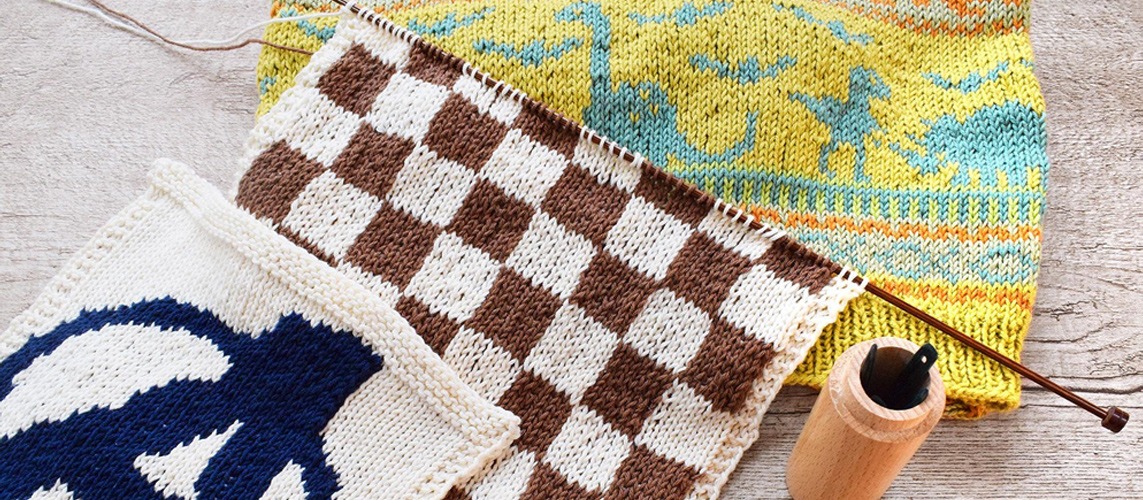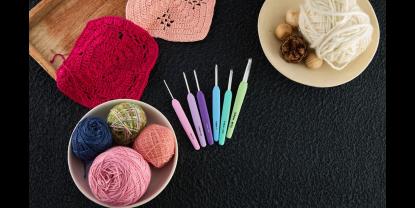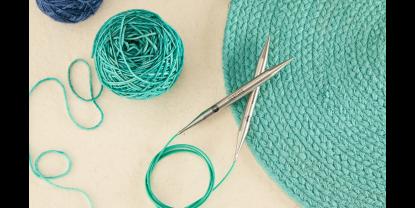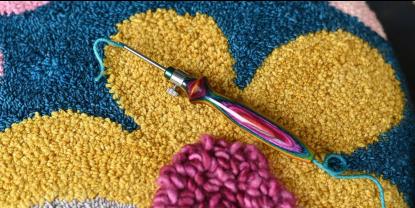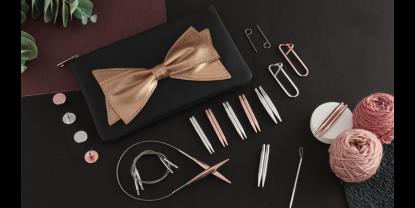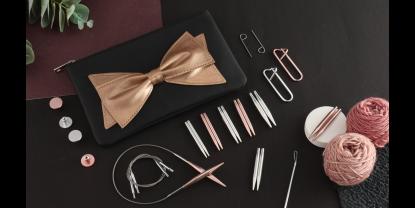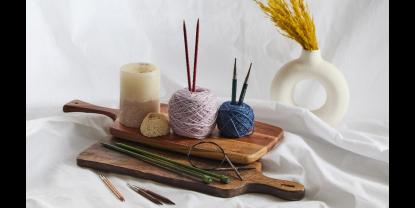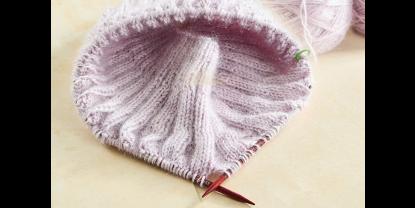Stranded colourwork, including intarsia, Fair Isles, twined or Jacquard knitting as well as landscape knitting, has become an exciting trend recently. And whatever type of stranded colourwork you have decided to go for, they all have one base technique in common: You have to get the tension of the yarn strands right, or the fabric you create will look a crumbled mess. Wetblocking can later help to correct some irregularities, but what it cannot do is to even out the strands at the back of your work.
So how do you do it? What does ‘right yarn tension’ mean when you knit with two or more colours? First, let’s have a look at what knitted colourwork actually means.
When working any colour pattern with at least two yarn strands at a time, you have to distinguish between the dominant and the secondary shade. The dominant thread is simply the one with the most knit stitches, while the subordinate colour is to be carried along at the wrong side of your work and will create what is known as a ‘float’.
Depending on the number of stitches you are crafting in one colour, these floats can be as short as one single stitch, but oftentimes they are as long as nine or ten stitches. The secret to any kind of stranded colourwork is to get the tension on these floats just right.
Have a look at our step-by-step guide on how to achieve a balanced yarn tension throughout your WIP.
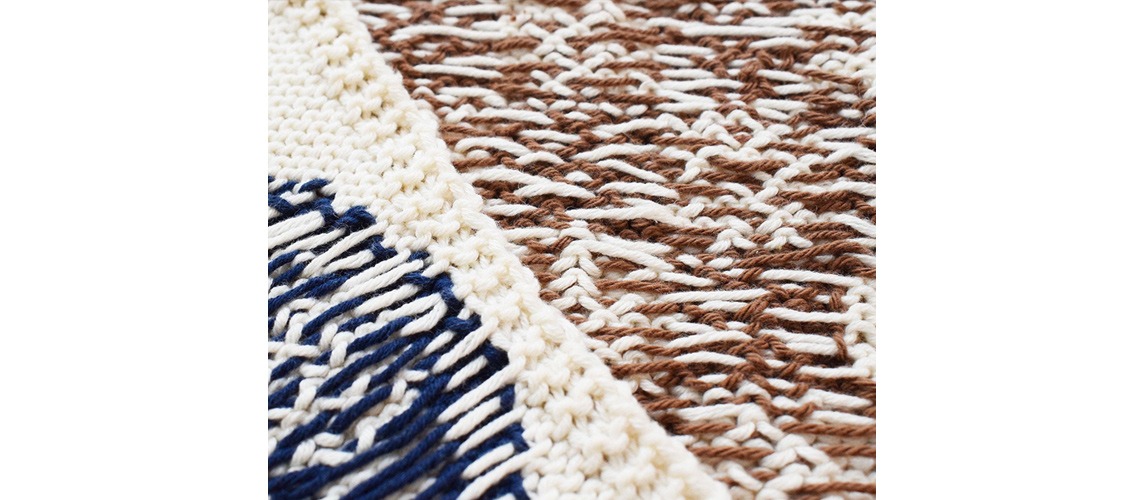
- Start out with a small diameter sample piece that you craft on a pair of straight needles, or long double pointed needles. A straight needle allows you to frequently spread out your stitches on your right-hand needle and check the floats at the back of your work. It is essential that the secondary colour is carried along smoothly, not too tight, nor too loose, or your pattern will look wobbly and puckered. A straight needle allows you to make adjustments on all strands at the back of your fabric.
- Work straightforward patterns with frequent colour changes and just two different colours in the same row, at the beginning. This way, your fingers and your brain can get used to holding and dealing with two strands of yarn.
- Pay attention which way to place your yarn works best for you.English or Fair isles style knitters are used to holding one strand of yarn in each hand. The dominant strand is wrapped around their left index finger, and the secondary strand is carried on the index finger of their right hand. This method allows you to grab the yarn quickly from both sides, by flicking each finger towards the needle as required. If you are a Continental style knitter, working with stranded yarn the English way can be a great gateway to check out other knitting techniques.
Another method is holding both threads in the left hand and carrying the second strand with your thumb and middle finger along as you knit.
And finally, there is also the option to use a yarn guide ring that allows you to secure one or more strands.
- Weave in your secondary colour as you knit your pattern. Some knitters say the float should be interlaced with the dominant yarn every two stitches, some leave strands of up to five stitches. Whatever knitting option you go for is up to you, but, weaving in is a great way to maintain just the right tension throughout your whole piece. The more often you weave in your strands, the nicer the result. But bear in mind that the fabric will also result denser and less stretchy then. If you are producing colourwork with very chunky yarn, you may want to weave in your yarn less frequently. If you leave longer floats, though, you may encounter that your strands are sagging and the stitches in your secondary colour end up being too large. A four to five-stitch mark for weaving in your stranded yarn usually provides best results.
- Keep your yarn balls separate. This may sound a rather small piece of advice, but keeping your yarn balls as far away from each other as possible will prevent from tangling up the yarn. You may use a yarn bowl for each ball or simply keep one ball at your left side and the other at your right. Do not change their sides throughout your labor, as it may create a difference in your floats.
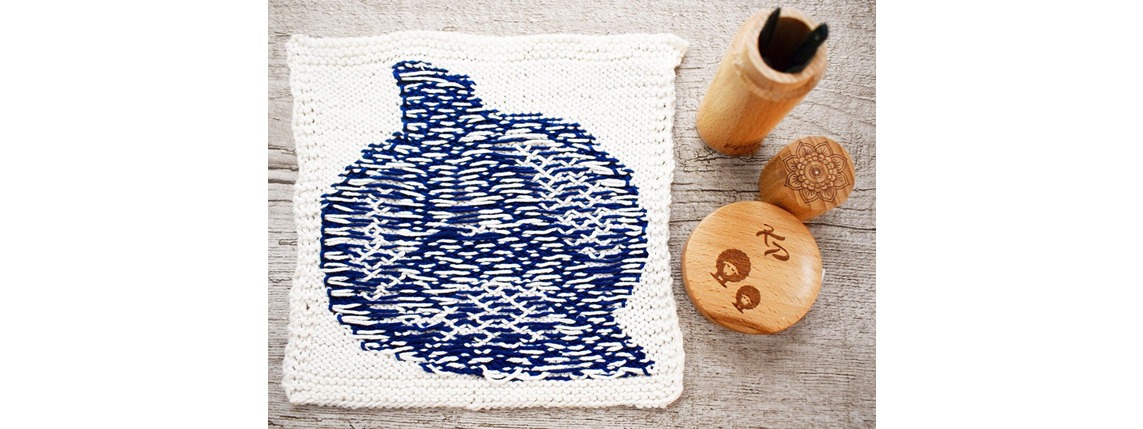
We hope you will find our guide of how to keep the right tension throughout your stranded knitting useful. colourwork knitting is fun, and with a little bit of practice and exploring various techniques, you will quickly notice how your hands will find their favorite. Let them tell you which way works best for them. Happy knitting!


